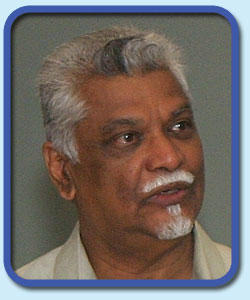Technology and Quality of Life
on a Small Island
|

|
|
Lloyd Narain
Coordinator
Amigu di Tera
|
|
Click on the button below
for more information:
|
|
|
|
How can technology improve the quality of life on a small island like ours? The quality of life that is acceptable to a community is something the members of that community must decide amongst themselves, in well-informed discussions.
Environmental degradation and the associated health impacts, social exclusion and cultural oppression need to be included in these discussions. Unfortunately, economic policies still continue to ignore these issues, rather than foregrounding them.
In this article, I want to identify a number of environmental aspects, which are of utmost importance in realizing a more livable Curaçao society.
Scarce natural resources: the use of mineral resources for industrial purposes is increasing so rapidly that certain metals have already become scarce. Copper is an example, which explains the high price of this metal. The fact of this scarcity does not mean that our earth has run out of copper, far from it. But the remaining copper ore is either buried so deep or available in such small deposits, that mining it is too expensive and costs too much energy. And it has been obvious enough in recent years that the price of energy is going up and up. The predictions that our planet’s oil reserves may be depleted by the end of this century will force us to seek alternative energy sources.
Global warming, caused in significant part by emissions associated with fossil fuel use, will exert such pressure on the quality of life, which we must search for solutions, in the short term and at a large scale, to mitigate these negative effects. Moreover, we will need all the expertise we can get for disaster prevention and the construction of hurricane- proof housing and dikes to protect coastal areas from the ongoing rise of the sea level.
The information above poses two technological challenges. As regards energy: besides locating new energy sources, we will need to reduce our energy use. This means achieving more with less energy. There are ongoing efforts globally to design appliances, machines and transport options that are efficient and require less energy. If we keep up with the latest developments in this area, we will be better at making smart choices and the right decisions. With regard to resources: we will have to try to manufacture products that require reduced amounts of natural resources. Many electrical devices used nowadays are smaller than previous generations of appliances. In addition, we will need to reutilize used materials: garbage as raw material for new products.
Dumping garbage in the sanitary landfill, or burning it in incineration plants amounts to destroying valuable resources. Our challenge is to design a system for the entire island, in which garbage is sorted and given a useful destination. For instance, certain used products can be sent to their supplying industry for recycling. Other used goods, such as furniture that is still in reasonable condition, can be patched up and resold. Organic kitchen and garden waste can be composted. And last but not least, some products and packaging materials might not even be necessary in the first place.
The oil refinery causes health problems for many people, it makes life in the neighborhoods downwind of the refinery difficult and it affects the environment at various levels. We need enormous investments in state-of- the-art technology to significantly reduce this pollution and to make the petroleum products meet internationally accepted environmental standards. Should the decision be made to close down the refinery, a major application of clean-up technology will be necessary to ensure that this industry’s current location can be used for other purposes.
Given that oil is running out, and that the factory and its petroleum products continue to emit noxious gases, we will need to consider carefully whether it is prudent to continue the refining activities. Curaçao is a small, densely populated island with a beautiful and typical landscape. Unregulated urban sprawl is fragmenting this landscape, spoiling its natural beauty while the remaining space is not enough for the original flora and fauna to survive. The scattered layout of residential areas also means increased traffic and so increased energy use.
The existing urban space needs to be used more efficiently. Again, this involves all kinds of problems and challenges, for which the use of appropriate technology can prove to be valuable. Today, more and more of our natural landscapes are being converted into industrial areas. The technological possibilities for drastically reducing the large number of radio masts in natural areas need to be assessed. Likewise, we must find an alternative for the wind farms that currently spoil the view of the landscape on our north coast. A combination of large-scale and structural energy-saving measures with alternative, clean, decentralized energy sources may prove to be the solution.
Our coastline, its bays and the sea are losing their character and their natural value because of ill-planned ongoing urbanization. It seems wiser to make the existing urban area more livable and attractive, and to refrain from further overdevelopment of the coastline. In short, there are many cases in which technology can be brought into play to help maintain or create a world that is livable despite large-scale environmental degradation.
On our island, we have the additional challenge of surviving with a very limited amount of space at our disposal. We will need high levels of ingenuity and technical savvy to improve quality of life in the existing urban area, so as to reduce stress on natural areas both on land and in the sea. The refinery, energy use, solid waste management, transport and appropriate construction, all of these require extra efforts regarding state-of-the-art technology.
|